Any book can be popular. Any book can have best seller written on the cover with a font bigger than its actual title. Any book can be in the bags of half of the citizens from your town.
But there are only 8 books in the entire world – in single volume format because we are not counting dictionaries – which managed to grab people’s attention and conquer their hearts till they were sold in more than 100 copies.
It might sound crazy but indeed, there are (only) 8 volumes so good whose uniqueness got them this far. These tomes demonstrate how fiction can embrace reality, how can true aspects about this world can easily be put in a imaginative and original story with a pretty cover.
Timeless
You know one amazing aspect about the best sold books of all times? They really put an emphasis on time, because they come from different time periods.
We are talking about books written in the contemporary age but also hundreds of years ago, when ladies wore puffy gowns or traditional clothing now seen only in grandmothers’ coffers, and gentlemen were all stiff and a little too obsessed with honour; books whose action is set in the contemporary era and mention computers, consoles and typical nowadays problems.
Then there are those tomes set in the future or a dystopian world in which the past and the present intertwine and give you something new, something taken from the purest imagination to drag the reader into something new, away from the daily stress and worries, to drag him into a world full of drama, adventures and supernatural.
Out of Ordinary
A good book – like those which we are about to present to you – introduce something out of the ordinary. The writers usually succeed in inserting supernatural elements in what seemed to be a mirrored image of reality. They take a boy and give him powers, a wand, a ring, a box or a planet and they build magical worlds around him. They send away the boy from his regular life to a new place where adventures await him.
 The boy finds himself in a castle with dragons, witches and ghosts, on a new larger planet, in a new country where he is somewhere between new types of people – he is above the simple men, but beneath the gods, he has culture unlike the others, but he has no concept of magic and eternal life. And exactly when he seems to be doing better, that he adapted and something good awaits him, plot twists happen.
The boy finds himself in a castle with dragons, witches and ghosts, on a new larger planet, in a new country where he is somewhere between new types of people – he is above the simple men, but beneath the gods, he has culture unlike the others, but he has no concept of magic and eternal life. And exactly when he seems to be doing better, that he adapted and something good awaits him, plot twists happen.
The evil surfaces, the ordinary and supernatural clash and not in a good way, something ruins all his evolution. This 360 degrees change can only end in two ways and it is up to each author to decide which one is better in order to please both the fans and himself.
So… are you ready to discover which are the 8 most amazing books in this entire world which sold more than you will ever make in your entire life? Read our list and discover if any of them are to be soon added to your collection. You might also consider writing yourself the next best seller and in a couple of years, you will be added to this list.
8. “She: A History of Adventure” – H. Rider Heggard
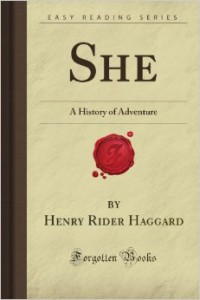
A book which broke the records right from the very first beginning and published as a series in 1887, “She: A History of Adventure” is a mix of genres – fantasy, romance, adventure and gothic. Centred on the Cambridge professor Horace Holly, the young man is asked by his dying colleague to take her of his son and gives him a box.
When the boy, Leo, turns 25, they open the box and discover a story which leads them to Africa. But the odds are not in their favour and they are captured by a native people. There they meet their ruler, the white enchantress Ayesha, the “she” in the title, a woman who has lived for more than 2000 years and who is waiting for her beloved one to return to her. And perhaps he has. Sales: ~100 million copies.
“All things live forever, though at times they sleep and are forgotten”
With such a line, you can already assume that “She: A History of Adventure” is amazingly written. Also, similar to other works such as “Heart of Darkness”, the novel discusses themes such imperialism, race and evolution, all of them portrayed as an analogy to the power of Englishmen over Africans; the idea of the unknown and the complex of superiority were also perfectly depicted as fear.
The two most important female characters, Ustane and Ayesha, are relatively the typical faithful women from the Victorian literature, but their sex appeal and the status as foreign exotic femmes fatales is something unusual to the 19th century novel readers.
7. “Dream of the Red Chamber” – Cao Xuequin
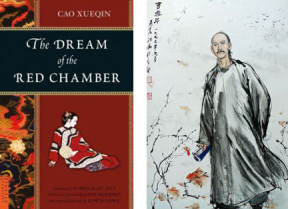
“Hóng Lóu Mèng” (1810 – 1873), in English “Dream of the Red Chamber”, or “Shítóujì”, “The Story of the Stone” is the most recent one of the 4 main masterpieces of the Chinese literature as it announce the failure and collapse of the feudal system and society.
Describing the aristocratic Jia family of noble ancestry, clan which eventually falls from its high status, “Dream of the Red Chamber” has a number of almost 500 characters, the main one being Jia Baoyu, a special adolescent torn between two girls. The frame story is about a stone wanting to see the world with a Taoist priest and a Buddhist monk, learning how it is like to be human. Sales: ~100 million copies.
Autobiography?
“ The writer experienced and lived the events ”
Cao Xuequin succeeding in writing such detailed masterpiece is actually due not to his talent, but due to the fact that he experienced and lived the events mentioned. The writer himself came from a honourable aristocratic family which eventually lost everything.
His grandfather was one of the most influential nobleman of his times and a favourite of the emperor, but because of intrigues, the family lost its fortune.
The characters coming from different families and with various social statuses are the best example of how the Empire’s social order was built and what was each person’s role in the family and the community during those times. One must read “Hóng Lóu Mèng” many times in order to understand its true value.
6. “And Then There Were None” – Agatha Christie
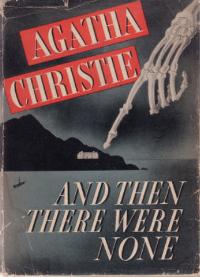
Agatha Christie is worldwide known as one of the best crime novels writers, if not the best. Out of her many novels, the one which is officially the best sold does not feature our beloved detectives – the charming moustached Belgian detective, Hercule Poirot and the loveable always knitting old lady Jane Marple.
Published in 1939, “And Then There Were None” depicts a group of people lured to an island. All came with a purpose, all have a dark past and it is time to pay. The price? Their own lives.
None of them can escape the island and fate and one by one, they are doomed to die like the ten little men from a famous nursery song. Sales: ~100 million copies.
Worth it
The people’s love and fascination for “And Then There Were None” is so big that and the novel itself is so genuinely smart and intriguing that it had to be adapted under various forms. Agatha herself turned the novel into a play version and gave it an ending more suitable for a stage adaptation.
The films surfaced in different decades from different countries and so did the versions for the small screen which are in a larger number. The radio “And Then There Were None” was popular in the 40s and still is in this decade.
Also, if you are into games, there are both a video and a board game following the story. Did we mention the graphic novel? Yes, there is a graphic novel, too. Should we expect a cartoon anytime soon?
5. “Harry Potter and the Philosopher’s Stone” – J. K. Rowling
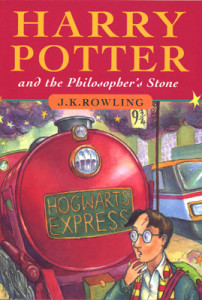
Of course the first novel of the Harry Potter franchise could not be omitted in any of our articles. The Boy Who Lived was introduced to us for the first time in 1997. “Harry Potter and the Philosopher’s Stone” starts with an orphan being left at his only living relatives.
Years later, the boy, Harry Potter, is shown living a Cinderella life. Soon, he is told that he is a wizard and is taken to the Hogwarts School of Witchcraft and Wizardy where he learns more about his abilities, makes friends and also enemies.
Many people are not happy to see that the legendary Potter child has survived and returned. With him, the wizard world’s worst enemy also attempts to return and of course, it is up to Harry to show he really deserves his renown and protect the Philosopher’s Stone. Sales: ~107 million copies.
Movie Differences
For a book with a relative small number of pages compared to the later volumes of the series, “Harry Potter and the Philosopher’s Stone” was shortened for the 2001 movie and some scenes were changed, as well as some characters were left out.
The famous encounter with Hagrid’s three headed demon dog is quite different, in the movie being the famous staircase mix up the one that leads the trio to the secret chamber where the dog was, while in the book the children are find the chamber when hiding from Flinch, because they were fooled to get out of their dorm at night by Malfoy.
Speaking of Draco, in the book, he and Harry almost became friends due to their often encounters, while in the movie they meet and they instantly do not like each other.
4. “The Little Prince” – Antoine de Saint-Exupery
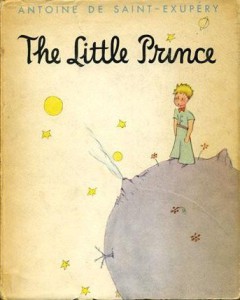
“Le Petit Prince” (1943) is that book everyone read or tried to read at some time in their lives. Featuring the narrator meeting the Little Prince after a plane crash, the boy tells him about his life on a tiny planet, what he used to do there and how he travelled from his planet to other asteroids and met different people, until it was time to visit Earth.
With the narrator being in danger of dying due to dehydration, so does the prince want to go back home and in a twist of fate, the two seem to change places; though both return home, they do it in different ways. Sales: ~140 million copies.
Is it a Hat or a Snake?
While it is mostly introduced as a novella for children and is underestimated by most adults, who refuse to reread it later, “The Little Prince” has many symbols and is a parable. The narrator’s plane crash is actually taken from de Saint-Exupery’s own experience as a pilot crashing in the Sahara desert.
The Prince is a younger version of the author’s, whilst his departure was inspired by Antoine’s brother, Francois, the Rose is inspired by his wife and even the baobabs are a representation of Nazism. With its witty images and light philosophy, the book has been adapted for all the media sources and decades after its publishing, Jean-Pierre Davidts wrote a sequel “The Little Prince Returns”.
3. “The Hobbit” – J. R. R. Tolkien
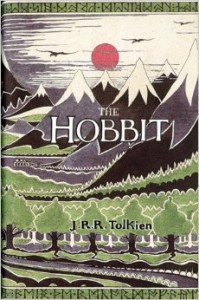
Published in 1937, “The Hobbit” is J. R. R. Tolkien’s famous novel focused on Bilbo Baggins. Fooled to host a party for a group of dwarves, the hobbit Bilbo is drawn to join a treasure hunting along Gandalf and the dwarves. On the way, Bilbo is stuck in a cave with a strange creature named Gollum.
There, the hobbit discovers a ring which helps him escape and continue his adventure, but worse things are to come. After a dangerous encounter with a dragon and tragic battle, Bilbo finally gets his reward. Sales: ~140.6 million copies.
Treasure Chest
People of all ages and from all eras have been passionate about adventure stories, so when “The Hobbit” appeared, it was only a matter of time until it would influence others and it would be adapted. Therefore, “The Hobbit” has inspired musicians and has been used for all sorts of games, stage productions, radio dramas in various languages and it was turned into animations and a successful trilogy for the big screen.
Despite the book not being exactly large, Peter Jackson turned the novel into a film series in 2012, 2013, 2014 following the success of the previous “Lord of the Rings” movie trilogy.
2. “The Lord of the Rings” – J. R. R. Tolkien
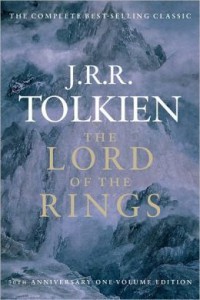
The 1954 sequel to “The Hobbit”, “The Lord of the Rings” is a three part fantasy novel consisting of “The Fellowship of the Ring”, “The Two Towers” and “The Return of the King”. Returning to the Shire many years later, we encounter Frodo Baggins, the Hobbit’s cousin.
Inheriting the Dark Lord Sauron’s ring which got into the sneaky hands of Bilbo, now Frodo is asked to take the ring as far away as possible. Gathering a little army of his own, Frodo, along his hobbit friends Sam, Merry, Pippin, wizard Gandalf, but also the Dwarf Gimli, Elf Gimli and te Men Boromir and Aragorn, receive the task to destroy it. Yet Gollum and Sauron and his army have other plans. Sales: ~150 million copies.
Movie Differences
The entire story of “The Lord of the Rings” is very complex and lengthy; it features different characters of various typologies and origins, with their own languages. Therefore, when Peter Jackson adapted the novel for the big screen, it had to be divided in 3 parts released in 2001, 2002 and 2003, each one bearing the name of the story from the book.
Yet, even with 3 movies of over 3 hours long each, many things were cut from the story line. Characters like Glorfindel and Tom Bombadil are missing, the female character Arwen, Eowyn and Galadriel were given a more substantial role.
Other differences can be noticed in the role played by the elves and how the fellowship was torn apart, but also in the development of the main characters.
1. “A Tale of Two Cities” – Charles Dickens
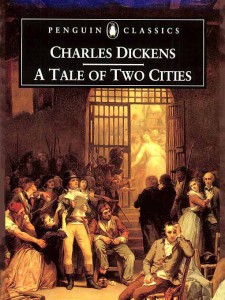
Surprisingly, while most people have read other novels by Charles Dickens such as “Great expectations”, “David Copperfield”, “Oliver Twist” and the story “A Christmas Carol”, none of them is the actual best sold novel of all times, but the 1859 “A Tale of Two Cities”.
Divided in what Dickens named three books, the narration follows the events before and at the time of the French revolution, the two cities mentioned in the title being London and Paris, the two being connected through a former Bastille prisoner and his daughter living in England and her two suitors, a Frenchman and an Englishman. Sales: ~200 million copies.
“It was the age of wisdom”
Dealing with themes about darkness and light, resurrection and social justice, the story from “A Tale of Two Cities” is heart breaking and touching, leaving the reader not only emotionally, but also mentally marked due to the traumatizing events and the recollection of people’s hardships inspired by real life.
Dickens illustrates perfectly the anger, hunger and blood thirst of people craving after revenge and revolution and how Paris became a place where innocence does not exist and being an aristocrat is a death sentence. How death is better than living, than reality.

